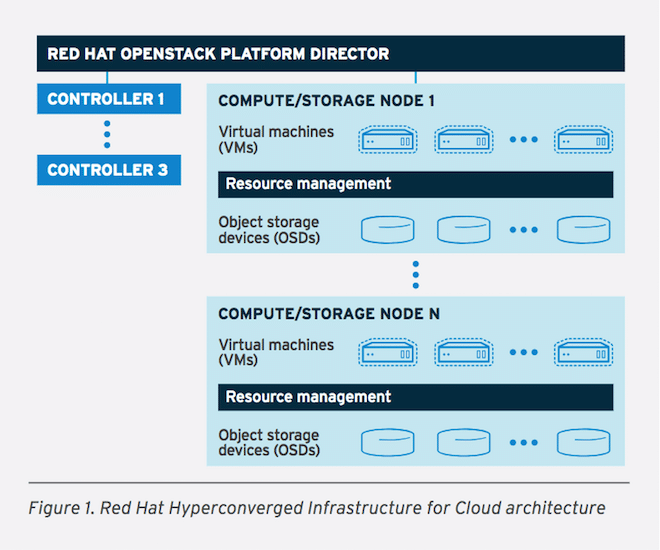 Today at the OpenStack Summit 2018 in Vancouver, Red Hat Inc. announced its solution for customers seeking to co-locate compute and storage functions in OpenStack environments, Red Hat Hyperconverged Infrastructure for Cloud. The new solution is a combination of Red Hat OpenStack Platform 13 and Red Hat Ceph Storage 3. The new solution brings these to together in a single user experience to bring greater operational and organizational efficiency and innovation at the edge.
Today at the OpenStack Summit 2018 in Vancouver, Red Hat Inc. announced its solution for customers seeking to co-locate compute and storage functions in OpenStack environments, Red Hat Hyperconverged Infrastructure for Cloud. The new solution is a combination of Red Hat OpenStack Platform 13 and Red Hat Ceph Storage 3. The new solution brings these to together in a single user experience to bring greater operational and organizational efficiency and innovation at the edge.
Today at the OpenStack Summit 2018 in Vancouver, Red Hat Inc. announced its solution for customers seeking to co-locate compute and storage functions in OpenStack environments, Red Hat Hyperconverged Infrastructure for Cloud. The new solution is a combination of Red Hat OpenStack Platform 13 and Red Hat Ceph Storage 3. The new solution brings these to together in a single user experience to bring greater operational and organizational efficiency and innovation at the edge.

Marking the second component of the company’s hyperconverged portfolio (the first being Red Hat Hyperconverged Infrastructure for Virtualization) Red Hat Hyperconverged Infrastructure for Cloud is an open platform aimed at improving application portability between the datacenter and the edge. For nodes in OpenStack deployments, this gives users the ability to use non-hyperconverged nodes across their networks with hyperconverged nodes at the edge. That company goes on to state that its new Hyperconverged Infrastructure for Cloud will provide a smoother customer experience from procurement to day three operations by delivering a pre-packaged solution with socket-pair pricing.
Customers that are looking to leverage network functions virtualization to deploy more functionality at the edge of network, can also benefit from Red Hat Hyperconverged Infrastructure for Cloud. Aside from these benefits, he new solution also provides all the networking capabilities of Red Hat OpenStack Platform 13 such as Real-time KVM. The solution can benefit those looking to roll out the upcoming platforms for 5G as well.
Benefits include:
- Unified lifecycle management – Red Hat Hyperconverged Infrastructure for Cloud helps create standardized private cloud building blocks, making it easier to enable continuous operations and manage OpenStack and storage functions as a single unit with configuration consistency across the supported lifecycle of the solution.
- Lower cost and greater operational flexibility – The new offering allows organizations to run dedicated compute and storage layers at the center with hyperconverged nodes at the edge all running on industry-standard hardware. In addition, all OpenStack services are containerized leading to additional cost savings, and more efficient resource management.
- Broader organizational efficiency – Customers can use existing knowledge and assets around private cloud infrastructure while taking advantage of the benefits offered by OpenStack technology. Hyperconverged infrastructure has great appeal with IT generalists, who are rapidly replacing siloed specialist roles in the modern enterprise. In addition, edge technicians who may lack deep knowledge of OpenStack deployment and configuration can benefit from the unified lifecycle and user experience.
Availability
Red Hat Hyperconverged Infrastructure for Cloud is expected to be generally available in June 2018.
Sign up for the StorageReview newsletter
